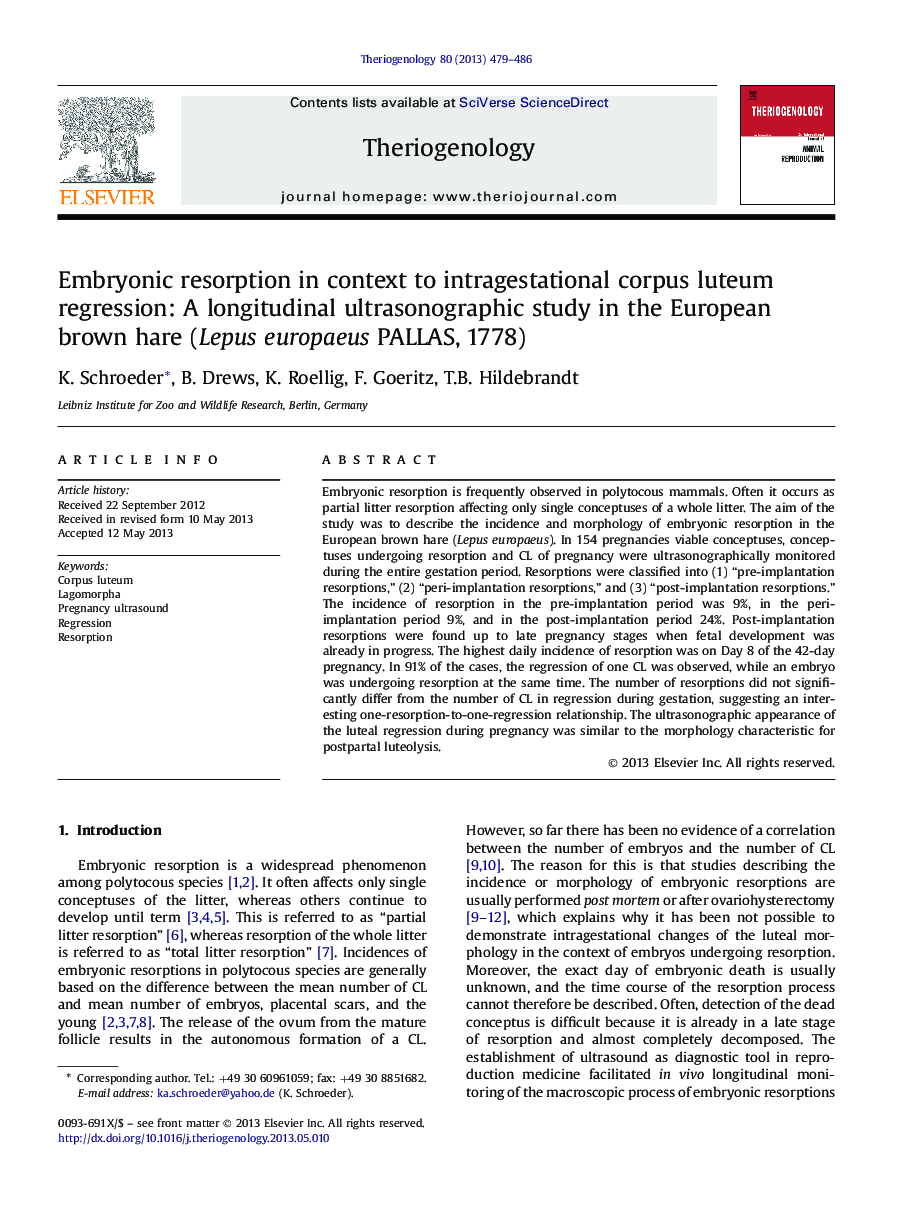| Article ID | Journal | Published Year | Pages | File Type |
|---|---|---|---|---|
| 2095311 | Theriogenology | 2013 | 8 Pages |
Embryonic resorption is frequently observed in polytocous mammals. Often it occurs as partial litter resorption affecting only single conceptuses of a whole litter. The aim of the study was to describe the incidence and morphology of embryonic resorption in the European brown hare (Lepus europaeus). In 154 pregnancies viable conceptuses, conceptuses undergoing resorption and CL of pregnancy were ultrasonographically monitored during the entire gestation period. Resorptions were classified into (1) “pre-implantation resorptions,” (2) “peri-implantation resorptions,” and (3) “post-implantation resorptions.” The incidence of resorption in the pre-implantation period was 9%, in the peri-implantation period 9%, and in the post-implantation period 24%. Post-implantation resorptions were found up to late pregnancy stages when fetal development was already in progress. The highest daily incidence of resorption was on Day 8 of the 42-day pregnancy. In 91% of the cases, the regression of one CL was observed, while an embryo was undergoing resorption at the same time. The number of resorptions did not significantly differ from the number of CL in regression during gestation, suggesting an interesting one-resorption-to-one-regression relationship. The ultrasonographic appearance of the luteal regression during pregnancy was similar to the morphology characteristic for postpartal luteolysis.
